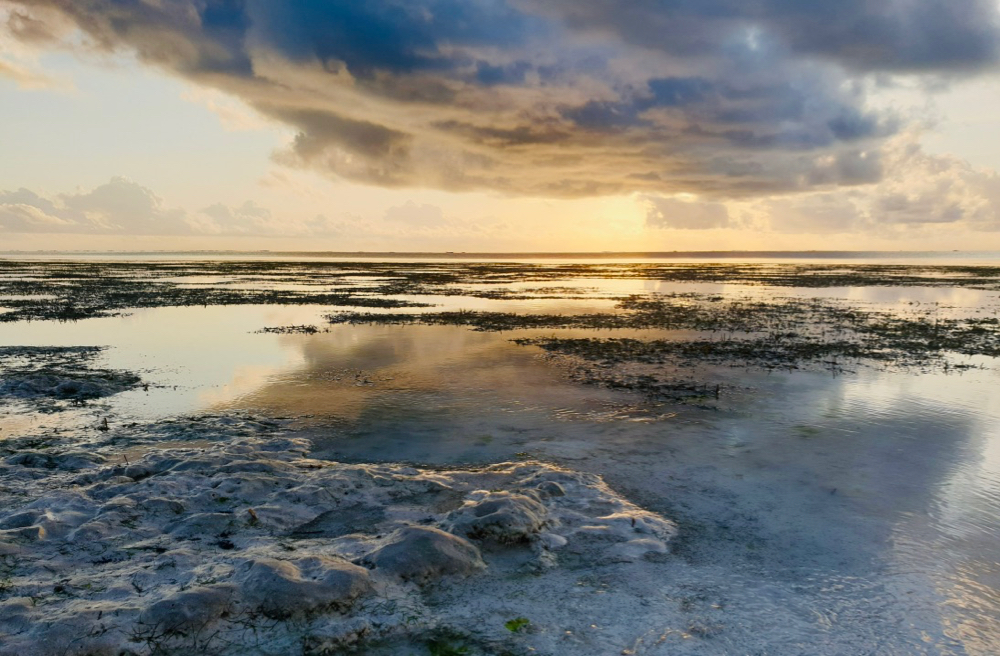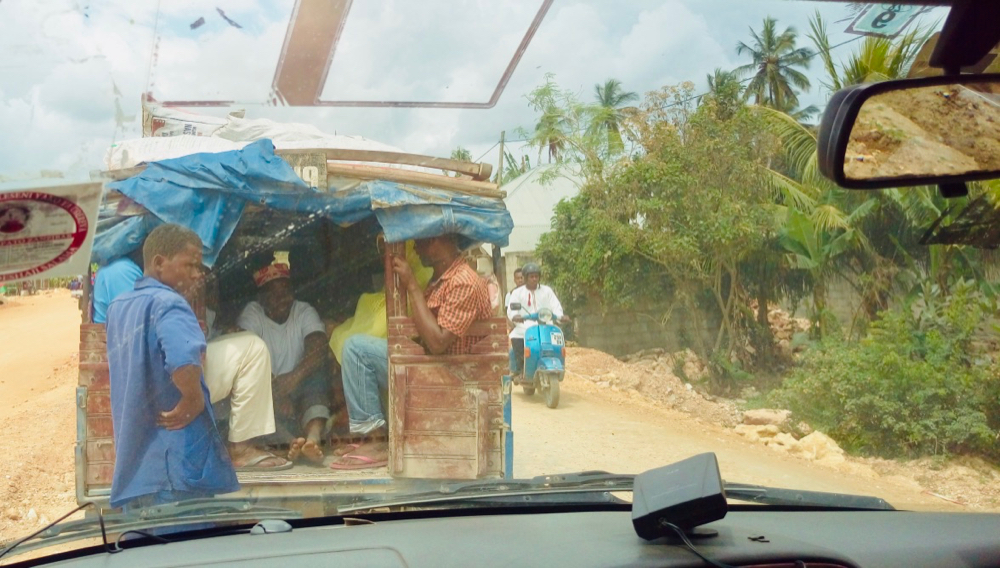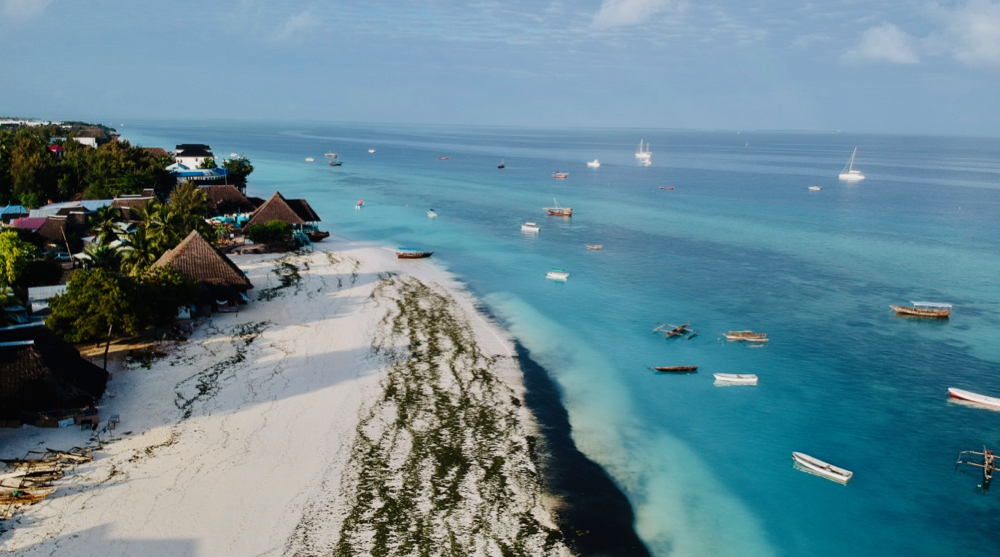Zanzibar – good to know before you travel
October 15, 2019

Zanzibar … This word is likely to bring flashes of an exotic island. The truth is not far from this, however Zanzibar is actually an archipelago consisting of two larger islands (Pemba and Unguja) and several smaller ones.
Administratively it belongs to Tanzania (this African country is located just below the equator on the east). In the past, many different nations wanted to conquer these islands and it is not surprising at all. Their natural endowments attract hundreds of thousands of tourists each year from all over the world but mainly from Europe.
Unguja is the larger of the two big islands and the main one too. When it comes to Zanzibar, almost everyone associates with this only 85 km long and 39 km wide island. Below when I refer to Zanzibar, I’ll think of the island of Unguja.
Which part of the island to stay at
This is always a cardinal question for me as it is probably for most of the individual travelers. We need to think carefully about where our accommodation should be located so that it will meet all our needs. And in Zanzibar not only our own preferences but also the power of nature must be taken into consideration. At every single point of the island the moon has a tremendous impact on the sea level, in other words the high- and the low tide. This can cause some annoyance in some parts. Imagine that in the morning the turquoise water is calling you for a nice swim, but in the afternoon it looks like someone pumped the water out of the sea and only seaweed and tiny puddles remain. This extreme phenomenon is well-known throughout the whole island.

Since there are many things to discover in every part of Zanzibar, we decided to stay at 3 different places.
Jambiani and the eastern part
Jambiani, the small but very long village became our favorite during the trip. We have never seen anywhere else such white, flour-like sand (only the beaches on the east coast have sand like that, including those to the northeast). The village is quiet and still, with small villas, bungalows and restaurants lining the beach. The locals are extremely kind, helpful and cheerful. Sunrises are wonderful. In the morning women are working on the beach collecting seaweed, in the afternoon, children are playing football in the white “powder”, letting some strangers play with them sometimes. Because this eastern part is quite windy, Jambiani is one of the favorite destinations for kite-surf lovers alongside the “city” of Paje. Jambiani is recommended for those who like peace and stillness but sometimes like to get out and go for a trip in the area. There are many sights nearby (Jozani Forest, Butterfly Park, Kizimkazi Village – dolphin tours start from here, the famous The Rock restaurant is a few km away, Kuza Cave). If you’re looking for a bigger bust on this part, maybe Paje is a better option.
Accomodation: IFA Beach Resort
Nungwi and the north
Nungwi is the island’s liveliest resort town with most restaurants, bars, souvenir- and liquor stores and with the largest number of tourists visiting. There is a “proper” supermarket and a regular money exchange too. Of course, in addition to what the city itself has to offer there are several programs to choose from (diving or snorkeling at the Mnemba Reef, Nungwi Marine Turtles Mnarani Conservation Center, Nungwi Aquarium, sea fishing, etc.)
Accomodation: Beach Baby Lodge
Bububu and the west coast
Bububu is not a resort town at all, it is a densely populated village, with only a few smaller hotels, villas and guesthouses. We were not amazed by the beach itself, we didn’t find it very attractive, especially during the low tide. But what we have seen and experienced here is what local life really looks like, how people live their daily lives, how wedding preparations take place on a Friday and how they party until dawn (well, we wouldn’t have minded skipping that experience). In Bububu you can really get more insight into the local life than in the resort towns and that’s why we found this place super interesting. The famous Zanzibar spice farms are just a few kilometers away from Bububu and the bustling capital is also nearby. It’s also possible to take a direct boat to Prison (Changu) Island (we had it organised through the villa we stayed at).
Accomodation: Imani Beach Villa
Basic expressions
Not a must of course, but the locals are clearly happy to hear a few words in their language, which is no other than Swahili. Let’s see what’s worth knowing.
Surely everyone knows the term “hakuna matata“, at least from the movie Lion King. It means everything is fine, no problem. The locals don’t only say it often but they seem to really feel it as well.
The second we met our driver, Rajab at the airport, he greeted us immediately with a loud “karibu sana“. During our time in Zanzibar we have heard this word many times, it means “very welcome”.
Let’s not forget one of the most important one “asante sana” that means “thank you very much”. This is something we used often. “Sana” itself means “very much”.
And of course, the first thing that everyone probably learns in a foreign language is greeting. On the street, in restaurants, hotels, basically everywhere you’ll hear people screaming “jambo“, the local “hi”. But so is “mambo” used, which is answered by “poa“. The word “poa” is very diverse, it describes everything that is good, delicious, tasty, okay, etc. “Poa” is basically their happy word.

People
The diversity of Zanzibar is reflected not only in its natural beauties, but also in people who live and work there. Their kindness, hospitality and openness captivated us in an instant.

The island is not only inhabited by locals. In addition to the active involvement of locals in the areas of tourism the owners of most hotels, guesthouses and restaurants along the coast are mainly foreigners, and a large proportion of workers from the mainland come to take advantage of the island.
There are also members of a very special ethnic group (perhaps the most well-known ethnic group in East Africa), originally native to northern Tanzania and southern Kenya. They are the Maasai. Thanks to their tall, slim figure they are easily recognizable. They come to Zanzibar for better opportunities and you can meet them almost anywhere on the beaches. They dress in traditional costumes, they wear handmade jewelry and other traditional items. The people we met and talked to we found extremely kind and didn’t feel intimidated by them for a second. However, the locals complain about the fact that there are some Tanzanians, who have nothing to do with the tribe, dress up as Maasais and they try to “sell” themselves as Maasai – on one hand they deceive unsuspecting tourists and on the other hand they disrespect the real authentic people and their culture.

In addition, there are also the so-called “beach boys” stumbling along the coast trying to sell tourists various services, let it be dolphin- or snorkeling tours, diving or any other leisure activity. The opinions about them are very divided and we have experienced both, the good and the bad examples too.
In Jambiani, for example, there was a guy named Moody. Whenever he had some free time (was not out on the sea or doing other jobs) he was out on the beach selling his services to people. We met him in front of our hotel in Jambiani. First we were kind of skeptical towards him, he really is the kind of person with a good sense of getting under your skin. In the end we gave him the chance and we ended up loving spending time with him on the Kizimkazi dolphin tour and later that day we paid an entry to his traditional sailboat for snorkeling. Both were amazing experiences. We didn’t regret either. I dare to recommend him for any kind of program in Jambiani. As an original Zanzibar person he is very knowledgeable about the area and has many different contacts too.

In Nungwi, however, we rather avoided the beach boy type of “businessmen”, who “organized” boat trips and snorkeling, and sold “original” ebony wood items. It turned out at some point that they’d deceive us in a blink of an eye.
Transportation
There are several ways to get from A to B within the island. It depends on what your budget is, how important your comfort is and how much time and money you have.
Taxi
Because we stayed in 3 different parts of the island and preferred comfort and speed, we used the service of a private driver. He is a very nice, sometimes a bit sorrowful young man, who had several Hungarian clients and we can only recommend him too. We used Rajab’s service from day one. He picked us up from the airport at dawn, and we traveled with him from south to north, then back to the south again. He provided us with plenty of information, he always had a story to tell, and, very importantly, he was always on time at any agreed time, whether at dawn or late at night. And his rates are better than arranged transports through hotels.
You can get in touch with Rajab on his Facebook page.
Scooters
Shorter distances can be done on a scooter, though it takes some courage as not only the road quality is not too promising in many places (only the main roads have concrete, some are in good condition, but there are places where they are quite poor) ), they also drive on the left side of the road, which is quite foreign to many of us. And unfortunately they are not on the top of their game when it comes to the driving culture. The daily rental rates for scooters are around $ 30 in most locations.
Bicycles
Bicycles can be rented for as little as $ 5 a day. We rented bikes only once, but our timing did not turn out to be too clever as we were cycling from Bububu to the spice gardens. Well, we just wanted to, but our bodies gave up the fight uphills, so we were pushing our tho-wheelers on a good distance. Downhill, of course, it was fun, but yet you have to be very careful within the traffic and cities especially. For longer distances I would not recommend cycling at all.
Dala-dala
Dala-Dala basically covers the public transport of Zanzibar, which is basically the bus service. There are different forms of “buses” you can run into. For example, between the capital and the most popular resort city, Nungwi, number 116 transports locals and tourists alike. Number 116 is a traditional smaller bus that looks quite comfortable to travel with. However, the most widespread are vehicles (I wouldn’t call them buses) that have 1-1 continuous bench seats on each side of the back platform, plus people can be seated in between the benches in a more or less fetal position, but those who are more enthusiastic can climb up to the rear and side of the vehicle. We were not brave enough to try this form of transportation.
For a longer distance you will be charged 2000 TZS ($ 1), and 500-1000 TZS for the luggage. All the towns and villages on the island are covered by Dala-Dala services.
TIP: It is important NOT to pay in advance, especially to someone who gives you only directions. Pay only when locals pull out their banknotes.

Cars
We did not dare to hire a car but we saw several foreigners traveling by rentals. Car rental can be rewarding for those who want to travel across the island, stopping at multiple locations. Let’s face it, a car gives you plenty of freedom. In retrospect, I regret not renting, the traffic we had to deal with was overall not too drastic taking into consideration all the circumstances, although we saw situations, especially in cities, where I wouldn’t like to maneuver in a four-wheeler.
Getting there
To Zanzibar you can arrive by plane or boat on the water.
1) By plane
There is an international airport on the island where we landed from Dubai.
Also, flights depart from Tanzania’s capital, Dar-El-Salaam, almost every 15 minutes and land in Zanzibar Airport in as little as 20 minutes (prices start from around $ 30). Kilimanjaro Airport is just one hour away (from $ 80).
2) By boat
There are 2 official ferry companies departing from the capital’s main port (Zanzibar Ferry Terminal), one is Azam Marine Coastal Ferries and the other Fast Ferries. You may want to book tickets at least a day in advance. Azam Marine tickets are available in 4 different categories, with the lowest price being $ 35 and the most expensive $ 60, depending on the class. Yes, it is often more expensive to take a boat than to fly.
My acquaintances were more brave than boarding an official ferry from the mainland, they found a fishing boat in Dar-el-Salaam, Tanzania’s capital, heading for Zanzibar, and they were readily transported by the fishermen.
Visa
Tanzania is required to have a visa for EU passport holders. However, you do not need to apply for a tourist visa in advance. A visa on arrival is stamped into the travel document within minutes. What you need for it:
- Passport, valid for 6 months from the date of departure from Tanzania
- $ 50 visa fee in cash
- Completed Entry Applications – these forms can be found at the terminal. If you have a pen with you, you’ll be faster to fill in the form.
There are countries in the world that require to pay an exit tax at departure, but in Tanzania there is NO such fee.
Vaccinations
For Zanzibar only you are NOT required to be vaccinated, but there are 2 cases when you might have to show (not sure you will be asked for it, but if you do, you should be able to show it) an international certificate for yellow fever vaccination:
- Mainland: If you are not visiting only Zanzibar but also want to go on a safari or climb Kilimanjaro, then a trip to the mainland will require vaccination.
- African transfer: If you land in Zanzibar via an African country (including Tanzania), you may be required to provide a certificate. For example, we were thinking of traveling with Ethiopian Airlines (which was the cheapest option), with Ethiopian and Kenyan transfers – in that case we would have needed a vaccination certificate.
Currency and payment
In Tanzania and so in Zanzibar the official currency is the Tanzanian Shilling (TZN). In addition to the official currency they accept USD basically anywhere on the island (which is more widespread than the EUR, even though we have met mainly European travelers). We took USD with us as foreign currency, but we always made sure we had enough shillings with us, because even though USD is accepted, paying with it will be always more expensive.
It was easy to exchange money everywhere, even in places where you wouldn’t even think it was possible. In Jambiani, e.g. the “money exchange” was on the corner of a dirt road where chickens and cocks were scratching in the sand and cows blocking the way. There was a small grocery store – or rather a stall – and we sealed the deal with the shop owner under its counter.
In bigger towns it is worth to visit several exchange offices, because there can be big differences in the exchange rates.
Credit cards are only accepted in bigger hotels and restaurants and usually they charge a transaction fee of up to 7-10%.
TIP: Larger and newer denominations are exchanged at a better rate (as in other African or Asian countries) than small ones.
And what to keep in mind in Zanzibar? Bargain. Even when you exchange money. Bargain everything and all the time!








